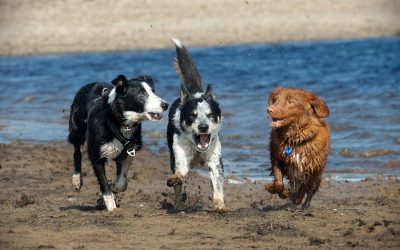
Many dog owners worry that their dogs are just “doing it for the treat” rather than truly learning a behaviour. But let’s unpack this fear—because, in reality, this concern is based on a misunderstanding of how learning works.
How Do Dogs Learn?
When we teach a new behaviour, we typically use one of three methods:
- Luring (guiding the dog with food or a toy)
- Shaping (rewarding small steps towards the full behaviour)
- Capturing (marking and rewarding a naturally occurring behaviour)
Each of these methods relies on positive reinforcement, meaning the dog gets something they value when they perform the behaviour correctly. And thanks to science, we know that behaviours that are reinforced increase—the dog will want to do them more because they associate them with something good.
The Power of Motivation
Motivation drives all living beings, including humans.
Think about it: Why do we go to work? Most of us wouldn’t if there was no paycheck at the end of the month! Even if you love your job, money allows you to enjoy things like travel, nice clothes, or in my case—more Border Collies!
Would you get up in the morning if there was no reward at all? Probably not. So why do we expect our dogs to behave without motivation?
Dogs don’t naturally sit, stay, or come back when called just because we ask them to. They need to learn why these behaviours are beneficial to them. Reinforcement gives them that reason.
Reinforcement Leads to Habit
Dogs absolutely perform behaviours for rewards, just like we do. But here’s the key: over time, reinforcement helps behaviours become habitual.
Real-Life Example: Teaching Recall
Let’s take recall (coming when called) as an example. If your dog is playing in the park and you call them back, why should they come? If every time they return, you leash them up and go home, they’ll quickly learn that recall means the fun ends—which makes them less likely to come next time. But if you reinforce recall with something valuable (like treats, play, or permission to keep running), your dog starts seeing recall as a great thing. Over time, coming back to you becomes a natural response because it has always paid off.
The Evolution of Rewarded Behaviours
When a dog consistently gets rewarded for a behaviour, that behaviour becomes valuable to them. The emotion tied to it shifts from “I do this for food” to “I do this because it feels good.” They also see our satisfaction, which reinforces their own enjoyment.
Look at working dogs—sheepdogs, gundogs, agility dogs. Their jobs are reinforcing in themselves, but they weren’t born loving every aspect of them.
- Sheepdogs don’t naturally want to stop or leave the sheep. They learn that doing so allows them to work again. Over time, those “painful” behaviours become second nature and even enjoyable because they lead to more work.
- Agility dogs may start with toy rewards, but after enough reinforcement, running the course itself becomes the fun part. A well-trained agility dog could complete a course multiple times without needing a toy at the end—because they now love the activity itself!
This is how habits form. The reward starts the process, but eventually, the behaviour becomes intrinsically motivating.
Stick With It—The Science Works
The mistake many owners make is removing rewards too soon, assuming their dog should do the behaviour “just because.” When the behaviour fades, they blame the method—but the method works. The reinforcement just wasn’t maintained long enough.
A common example is teaching a puppy to sit. When we start, we use treats every time. Then, after a few days, people stop giving treats altogether and wonder why the puppy stops sitting on cue. The reality is that the behaviour hasn’t been reinforced enough to become a habit yet. The solution? Gradually phase out treats over time while increasing other types of reinforcement, like praise, play, or access to fun activities.
Final Thoughts
Training with rewards isn’t bribery—it’s how learning happens. Over time, with the right reinforcement and consistency, behaviours become second nature.
So stop worrying about whether your dog is doing it for the treat—because at first, they absolutely are! And that’s exactly how learning should work.




